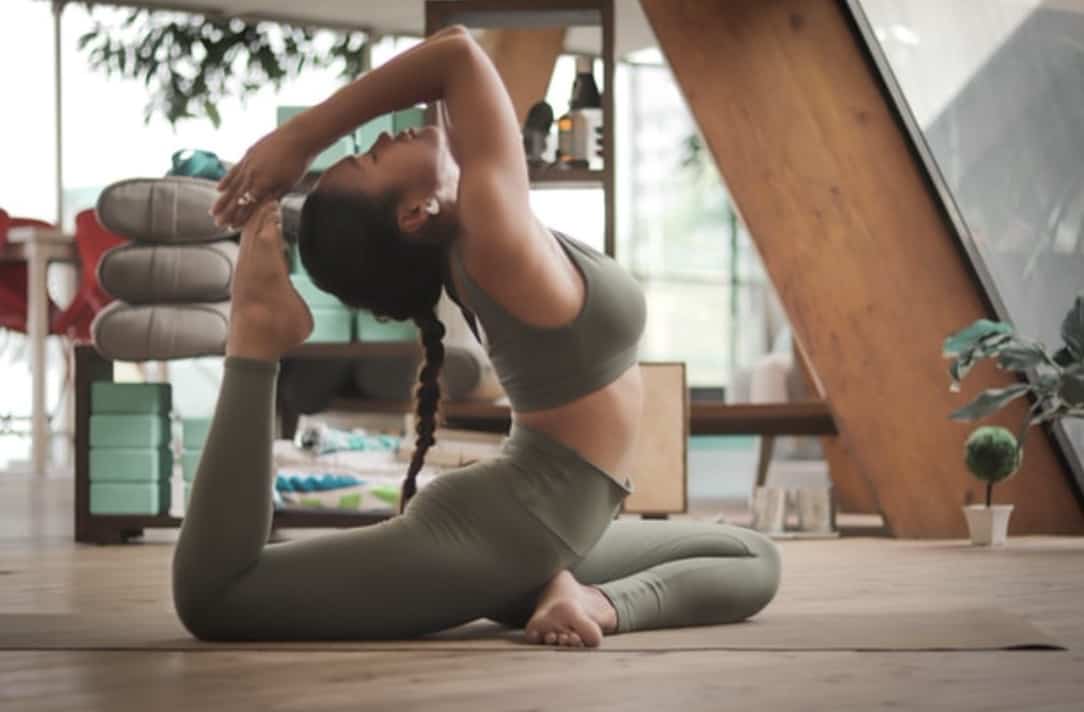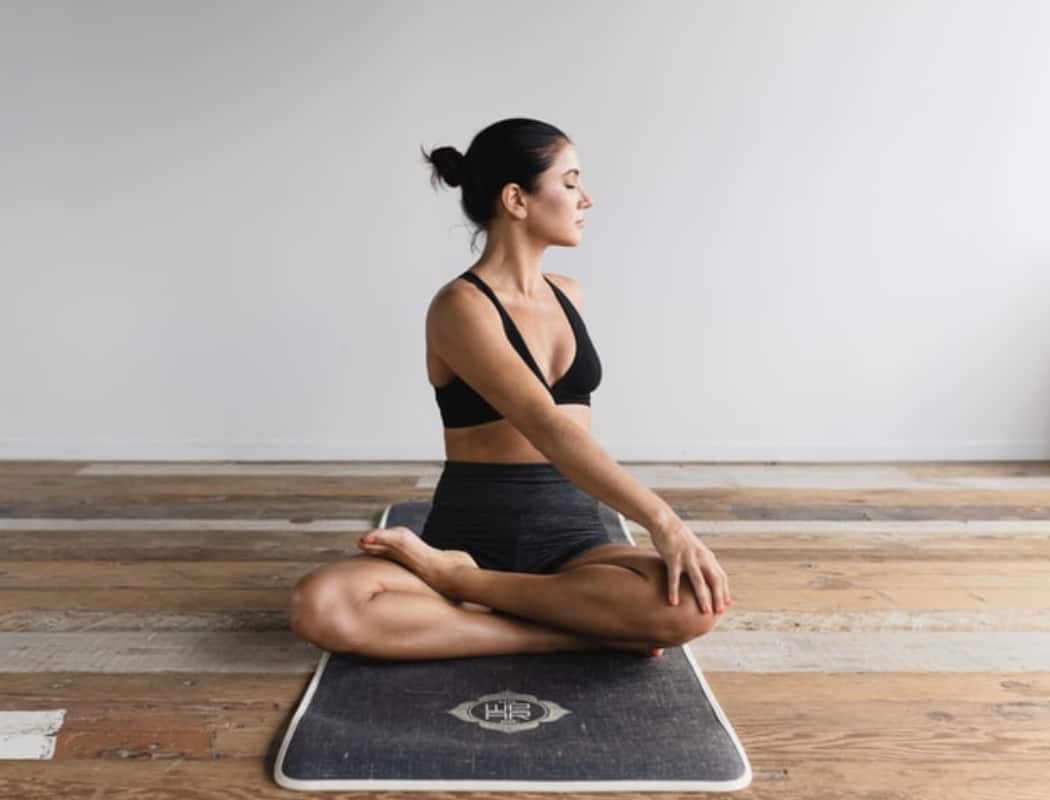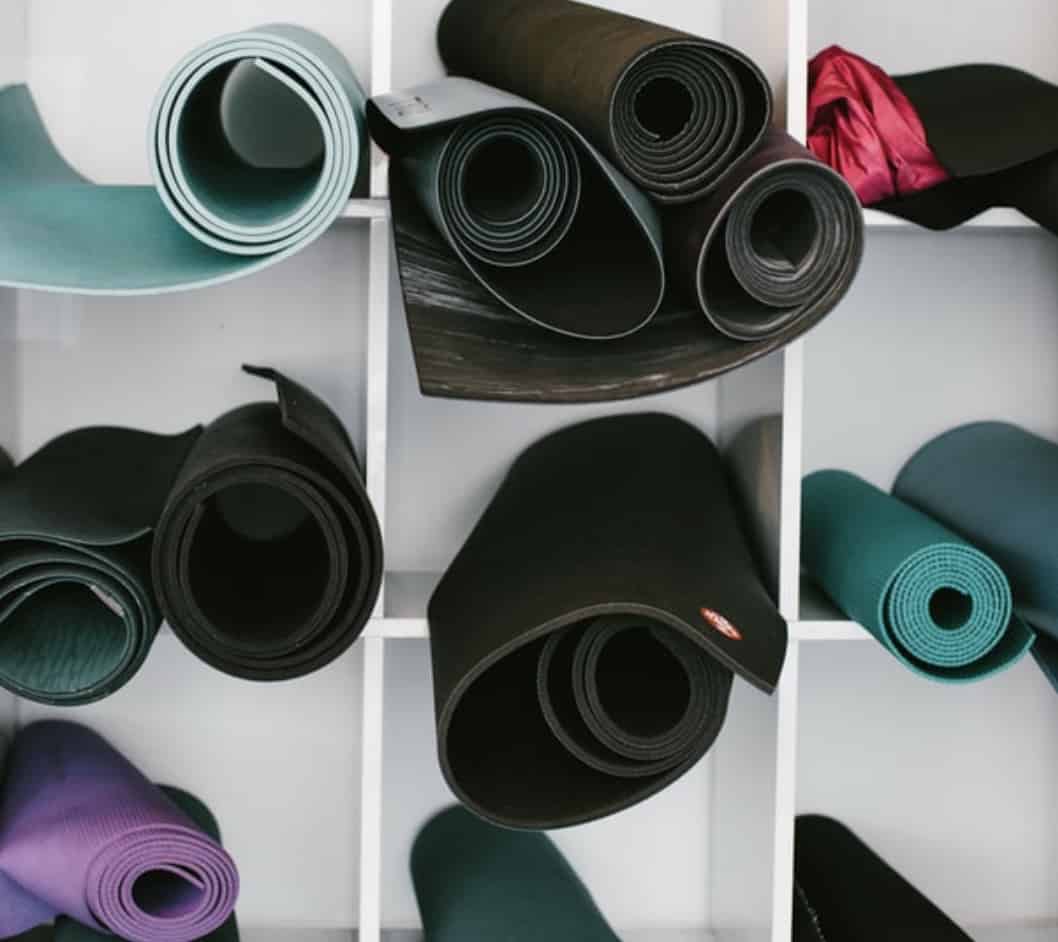Yoga mats come in a range of thicknesses from just one millimetre to ten millimetres, with the average standard yoga mat being somewhere around 3.3 to 4.5 millimetres thick. But which one is best for you, and how can you make sure you choose the best one for your needs?
Chapter Overview
Weighed Down
The first thing to look at is your weight (sorry). Your yoga mat must support your weight, providing a necessary layer of firm padding between your knees and ankles and the hard floor beneath, and too flimsy and thin a mat simply will not cut it if you are heavy. Bear in mind muscle weighs heavier than fat, so if you are slim but well-muscled and solid, you might find that a thin yoga mat does nothing for you. Opting for a thicker mat can give you a level of comfort that can make the difference between classes being a torment or being a pleasure, so do not be shy to step up a millimetre or two if you need to.

Portability
Many of us pop into yoga classes before or after work, and most yoga aficionados take their own mats with them, for reasons of both hygiene and comfort. Therefore, your yoga mat should be easy to carry. Most of them roll up into a cylinder that can be slipped into a bag and carried over one shoulder, light and small enough to carry for several minutes without stress. The heavier and bulkier mats can be more problematic, and you might want to think twice before purchasing a weighty mat knowing that you will have to carry it for several blocks before and after exercise. Working out at home, obviously negates this, and you can be as indulgent as you like in your house!
Stable Balance
Too thick a mat might impact on your ability to stand and hold poses for the required length of time. Make sure you choose a mat that will both support your weight without being so thick and plush that you wobble about when trying to achieve a tricky pose. Not only is this not conducive to a peaceful and exercising workout, you can end up with an injury from falling over.

Material Density
The material from which the yoga mat is made is also crucial. Soft foam will need to be fairly thick for it to do you any good, while natural rubber can be surprisingly effective even at minimal thicknesses. The difference is, of course, in the density of the materials, with more dense materials being effective in thinner mats, while less dense materials are less forgiving on hard surfaces. Natural rubber, especially if sustainably harvested and manufactured, can be a great option for the eco-conscious yoga practitioner. There are a wide range of materials used in the manufacture of yoga mats, and you should try out several before choosing the one that best suits your needs.

